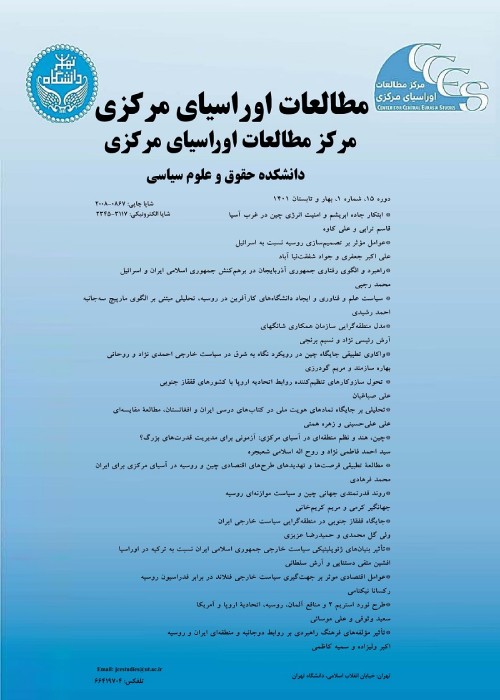Russia–US Confrontation in West Asia and North Africa Based on Gerasimov Hybrid Warfare Doctrine: a Case Study of Syria and Libya
Valery Gerasimov introduced his Hybrid Warfare Doctrine in 2013. In his doctrine, Gerasimov emphasized a combined use of hard and soft power elements (components) because he believed that Russia needs a new approach to counter new threats effectively. Therefore, it can be concluded that the Hybrid Warfare Doctrine is based on foresight and is formulated to prepare Russia to have a strong presence in modern battles. In addition to emphasizing a combination of hard and soft power, this doctrine attaches greater importance to the soft power and a redesigning of Russia’s defensive policies and troops; it also underscores deep concentration on military and defensive research projects. Thus, Gerasimov challenged the mainstream Russian approaches to the military and asserted that political leaders required innovative ideas and initiative to deal with future security/safety challenges. This doctrine gained popularity for the first time during the 2014 Russo-Ukrainian War, catching the attention of political, military, and security analysts. Russians applied Gerasimov Doctrine on a large scale in Ukraine for the first time and succeeded in annexing the Crimean Peninsula to their federation using an effective combination of soft and hard power. This was a great achievement for Russians because the Crimean Peninsula had a special strategic place on the Black Sea and could give Russians easy, rapid access to the eastern parts of the Mediterranean Sea, the Balkans, West Asia, and North Africa. As a result, Russians could gain numerous military, economic, and commercial advantages. Afterward, Russians started to get the most and realize their goals in West Asia and North Africa by applying Gerasimov Doctrine principles widely. Kremlin has always had eyes on this region since the USSR; however, when the USSR dissolved, Moscow focused more on problems caused by the dissolution. Consequently, the US seized the moment (used Moscow’s passive policy in its favor) and expanded its sway over this strategically important region. Russia rekindled its interest in West Asia and North Africa when Vladimir Putin took office. Russians believed they could achieve their goals and protect their interests only if they had a stronger presence in the region. They saw this region as promising in terms of economy, military, politics, and security. But Moscow faced a major challenge on this path: the US, a formidable rival. Looking back to their success concerning Ukraine, Russians believed that Gerasimov Hybrid Warfare Doctrine was the best tool to achieve their goals. Therefore, when they decided to intervene in the Syrian Crisis on the pretext of inhibiting terrorist activities, not only did they employ hard power, but they also used hybrid warfare elements extensively. Their success in Ukraine and events such as the Islamic Awakening made them fully aware of the importance and efficacy of soft war. Russians seemed to aim for more than a war on terrorism; they also harbored the thought of impeding the US increasing influence in Syria and the entire region. Applying Gerasimov Hybrid Warfare Doctrine in Syria, Russians gained remarkable achievements; as a result, by applying hybrid warfare elements in Libya, they resolved to challenge the US unrivaled position in the region and restore Moscow to its former glory in this oil-rich country in North Africa. In line with this, the current study addressed how Russia has used Gerasimov Hybrid Warfare principles to confront the US in this region. The data were collected through desk research and then described and explained within the research conceptual framework; the results showed that following Gerasimov Doctrine, Russia is combining the elements of hard and soft power to limit the expansion of the US influence in Western Asia and North Africa and widen its sphere of influence in the region. Russians concluded that non-linear warfare elements can enable them to pursue their ambitious geopolitical and geo-strategic policies without confrontation with the US. Even though Russia is a military superpower and its nuclear arsenal can pre-empt and minimize armed conflicts with the US, Russians regard Gerasimov Doctrine as a safer and more cost-effective path to their goals. In sum, considering the achievements Russia gained by applying Gerasimov Doctrine in Ukraine, Syria, and Libya, it appears that it is expanding its capabilities in hybrid, non-linear warfare and intends to promote this type of warfare in other parts of the globe.
- حق عضویت دریافتی صرف حمایت از نشریات عضو و نگهداری، تکمیل و توسعه مگیران میشود.
- پرداخت حق اشتراک و دانلود مقالات اجازه بازنشر آن در سایر رسانههای چاپی و دیجیتال را به کاربر نمیدهد.


